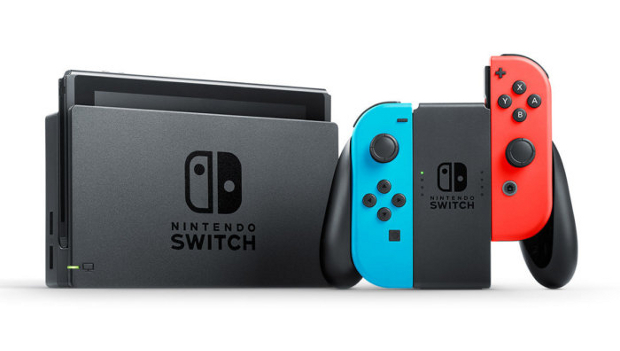Last night Nintendo revealed its upcoming handheld/stationary hybrid console and successor to the underwhelming Wii U, Nintendo Switch.
The Switch name refers to the device’s dual nature, both a traditional TV console and a mobile handheld. In its ‘docked’ form, the Switch looks like a Wii – a vertically oriented rectangle that connects up to your TV with an HDMI cable. The accompanying controller looks traditional as well, like a blockier Xbox gamepad with offset analog sticks.
Appearances are deceptive, though. You can remove the core of the Switch, revealing a tablet with a capacitive touch screen. And the controller? It breaks apart, the two edges sliding out of the central ‘Joy-Con Grip’ and attaching onto the sides of the tablet, basically recreating the Wii U controller. You can then take the Switch out into the world, with Nintendo touting between 2.5 and 6 hours of battery life. That’s a huge spread, so probably err on the side of the former for most gaming purposes.
There’s also a third way to play: the individual Joy-Con controller pieces also replicate the motion control functionality of the Wii, albeit in a smaller form factor.
This last format took centre stage as the announcement opened, courtesy of two experimental games: 1-2-Switch and Arms. The pair look like standard Wii-era party games, with 1-2-Switch having you duel your friends in a variety of mini-games while Arms has you fighting with extendable arms… and that’s it.
It’s fair to say most attendees were looking for Zelda and Mario games, both of which were revealed. Zelda: Breath of the Wild takes precedence, as it’s one of four launch games.
Super Mario Odyssey will arrive winter of 2017, and it seems suitably bizarre. The cartoon style the series has sported since the Nintendo 64 days has been blended with a lifelike cityscape, and the result is weird, cool, and maybe a bit uncomfortable.
There’s also a Splatoon sequel, bringing the Wii U’s hit squid-kid shooter to te Switch. The only problem? As of this autumn, Nintendo will start charging for the Switch’s online features. Splatoon might finally get released to a larger audience, but still be hobbled if nobody chooses to pay for Nintendo’s multiplayer support.
As for third party publishers, Nintendo ran through announcements for Shin Megami Tensei, Xenoblade, No More Heroes, Skyrim, and FIFA, plus a highlight reel of a few other games (including Ubisoft’s recent snowsports sim Steep). Nothing really to make you think third-party support will be a critical part of the Switch’s life cycle, but that’s par for the course by now when it comes to Nintendo.
And therein lies the problem. Like the Wii and Wii U, the Switch seems like it will be used mostly for first party titles and nothing else. There was no discussion of the Switch’s internal specs, but the previewed games were more on-par with the Wii U than the launch PS4 and Xbox One – let alone the updated PS4 Pro and the Xbox’s upcoming Scorpio refresh.
The Switch is a Nintendo console with Nintendo games. For some people that will be enough. For others, not so much. Not exactly the stunning endorsement some Nintendo fans hoped for, but it’s probably what we could’ve guessed.
The Switch will launch worldwide on 3 March for a suggested retail price of $299 (€280).
IDG News Service







Subscribers 0
Fans 0
Followers 0
Followers